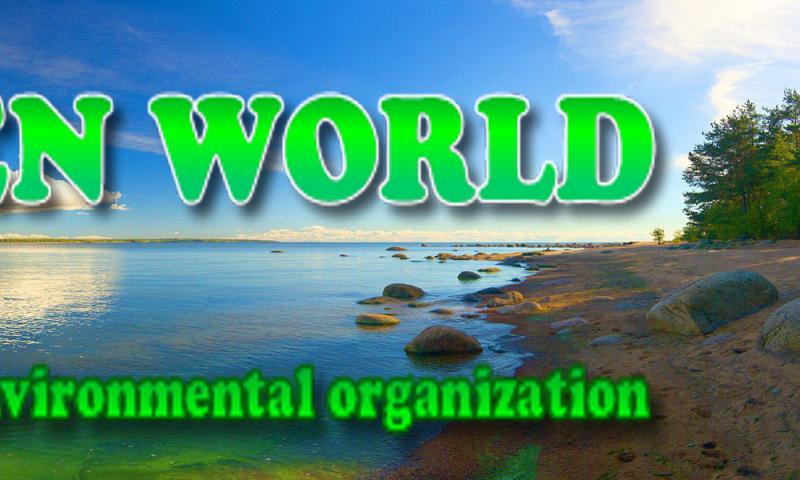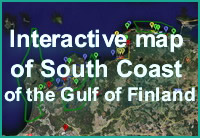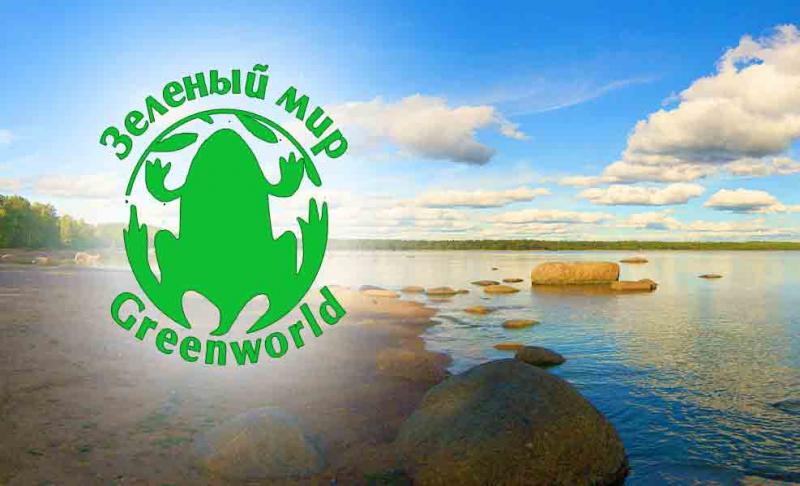
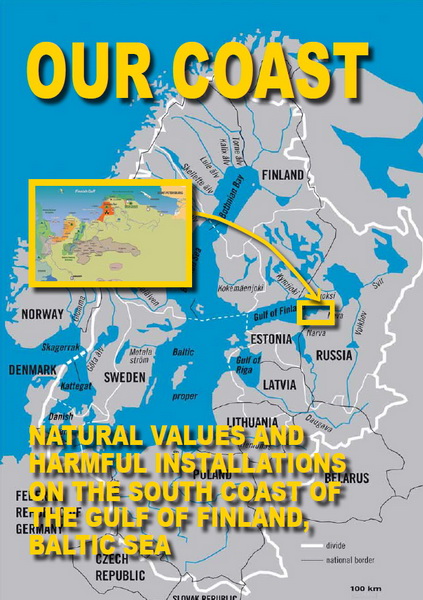 |
The South Coast of the Gulf of Finland |
|---|---|
| Natural Values and Harmful Installations |
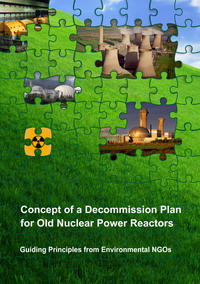 |
Concept of a decommission plan for old nuclear power reactors |
|---|---|
| Guiding Principles from Environmental NGOs |
Explosion in the Melting Furnace of Ecomet-S
Baltic Newsletter #89
Baltic Newsletter #89
IN THE ISSUE: EXPLOSION IN THE MELTING FURNACE OF ECOMET-S is the logical consequence of repeated violations, which have been traditionally ignored by the state regulatory bodies, and of the low level of safety culture at this radiologically hazardous facility.
On December 15, about 3 a.m. an explosion in the electrically heated furnace occurred. It was one of the furnaces belonging to ECOMET-S, a private company located on the territory of Leningrad NPP and specializing in the reprocessing of contaminated scrap metal by melting. The molten metal having the temperature of 1200°С was ejected from the furnace and hit three workers staying in the production unit.
Plant ECOMET-S, which reprocesses radioactive metal, is located on the premises of Leningrad NPP, 500 meters from its power units. To the right of the ECOMET-S building you can see a 100-meter tall ventilation stack of the second LNPP ‘stage’, which comprises two RBMK-1000 power units. Distances: to the center of St. Petersburg - 80 km, to Estonia – 70 km, to Finland – 100 km. The picture was taken by Oleg Bodrov on December 16, 2005.
Maxim Kuz’min (22 years old), Vitaly Lambrozo, 33, Vitaly Ognev, 32, attacked by the melt got extremely severe burns. From 70 to 90% of the surface of their bodies was affected. The first two were transported to the intensive care unit of Sosnovy Bor hospital № 38 in extremely bad condition. About 24 hours later Vitaly Lambrozo died. Vitaly Ognev was
transported to the Burns department of the Army Medical Academy of St. Petersburg, 80 km
from the place of the accident.
A possible cause for the accident could be the presence of a container (tank) with a gas. At that time the furnace contained more than 2 tons of molten steel. The tank exploded and hundreds kilograms of molten metal were ejected into the working area. This and other
possible causes of the accident are studied by a special commission, which includes civil
servants from St. Petersburg and Sosnovy Bor.
This is not the first incident at ECOMET-S. A similar incident took place there on the night of August 17 – 18, 2002; two workers were injured. There have been other incidents there, which also resulted in the crippling of personnel.
In accordance with Dmitry Boitsov, PR-manager of ECOMET-S, this last explosion did not cause the damage of the electric furnace, ventilation filters, which accumulate radioactive particles, and the failure of which could result in radioactive releases. This time the furnace, which is used for melting low- and medium-level metallic waste, was melting the non-radioactive metal.
The gamma background near ECOMET-S, which was measured by the GREEN WORLD 36 hours after the accident, was 15-18 microroentgen per hour, which corresponds to the background level. There have not been visible damages of the building, which houses the problem furnace.
It should be noted that the long-term studies of environmentalists and geneticists have revealed that pine trees near the Sosnovy Bor nuclear complex have a level of cito-genetic deviations 2.8 times higher than normal in similar pine trees 30 km from Sosnovy Bor in St. Petersburg direction, and this level has a statistical relevance (see “Baltic Newsletter of the GREEN WORLD”. №80 of 17 July 2004 http://www.greenworld.org.ru/eng/periodik/vestnik/index.htm )The researchers’ opinion is that this is the indicator of the fact that “storage and reprocessing of the low- and medium-level radioactive waste results in the additional contamination of the environment”. Simultaneously with putting into operation ECOMET-S the Ministry of Atomic Energy (Minatom) stopped the funding of regional ecological laboratory, which performed the radiological monitoring of the environment. By this a thirty-year environmental monitoring of the area, where the Sosnovy Bor nuclear complex is located, was stopped. The laboratory was closed down.
The story of ECOMET-S founding and operation included many violations of the Russian legislation (http://www.greenworld.org.ru/eng/news/ecomet/index.htm ), cheating and manipulations for the sake of launching profitable radioactive business:
Illegally, without the state environmental examination, for many years ECOMET-S conducted experimental melting of radioactive scrap metal on the territory of a rad waste management facility, Lenspetskombinat RADON (Sosnovy Bor).
Illegally, a site was granted for the construction of a largest in Europe plant, the design of which had not been subjected to the environmental impact assessment. And the site for this private project was found on the territory of a state company – Leningrad NPP, which is a special security nuclear-hazardous facility; ECOMET-S site is next to the storage
facility of liquid radioactive waste from the plant!
Illegal funding of the construction of the radiologically hazardous facility, ECOMET-S plant, which did not get the approval of the State environmental examination, was provided by GASPROMBANK.
Illegally, Gosatomnadzor (the State nuclear regulatory body) issued a license for ECOMET-S operation, though it did not have the permit of the State environmental examination.
Illegally, without the formal permit of the state environmental examination, RF Minatom
put into operation the ECOMET-S plant, the annual capacity of which is 5000 t. It happened on February 19, 2002.
In violation of the Declaration of intent ECOMET-S has received big shipments of radioactive metal from other regions of Russia. In this way, the south coast of the Gulf of Finland, close to St. Petersburg with its population of 5 million people, has been turned into a place where all-Russian radioactive waste is concentrated.
Negotiations are in progress, at which the shipment of radioactive metallic waste from Germany and Lithuania is discussed.
Russian legislation prohibits the import of radioactive waste to the country, but the reality shows that ECOMET-S possesses a unique capability of overcoming any obstacles on the way to profitable business. The lives of Russian citizens and the quality of Living Environment are sacrificed on that way.
So far all efforts of non-governmental organizations, citizens, deputies of the Council of Representatives of Sosnovy Bor aimed at making ECOMET-S work in compliance with the Russian legislation have not been successful.
Appeals to Public Prosecutors’ offices of different levels, regional arbitration court, Sosnovy Bor municipal and regional courts, to the Minister of Atomic Energy of the Russian Federation, environmental protection regulatory bodies, President of Russia – all ended in nothing. In the courts of justice the case did not get to essential hearings. The plaintiffs were refused an opportunity to dispute the legality of putting ECOMET-S into operation, and Public Prosecutors, for some reason, did not see the ground for taking measures. The courts responded with formal replies, which were likely to be written after counseling ECOMET-S.
At the same time, a worker Х who has been employed by ECOMET-S for several years shared his experiences dealing with the level of safety culture at the company. He revealed the following “each shift we had to violate industrial safety conditions, risk our health … The violations were in the faulty equipment, tools, which had to be repaired by yourself.
The unit for fragmentation (cutting) [of large parts of contaminated equipment, which was prepared for melting in furnaces] was not properly equipped – there was no air funnel for drawing out gas and particles [produced at plasma flame cutting], which contained radionuclides. After one hour of work [in such conditions] it was impossible to stay and breathe in the unit. Eyes watered, nausea and headache started …
The protection clothing was so worn-out that caught fire, if a spark got on it …
The trucks bringing metal, which exceeded the limits [of activity] entered and left the unit without any radiological treatment and dosimetry control. I never trusted the checks of personal dosimeters. They all were checked in our building by our bosses.
Coupons for the improved [treatment and prophylaxy] food were given irregularly and with big delays. We had to eat food brought from home right there, in the [production] building, during the breaks between operations [with contaminated metal]. Sometimes after shifts we had to take cold-water showers, the sanitary checkpoint was closed. The dosimetrists did not check how much [radioactive] dirt I was taking home”.
During the 4 years of illegal operation ECOMET-S has reprocessed about 7 thousand t of radioactive scrap metal of Leningrad NPP. Most part of this metal was sold (also to other countries) as clean metal, without any restrictions for its use.
More detailed information can be found on the GREEN WORLD site www.greenworld.org.ru and in the GREEN WORLD office +7 (81369) 72991, also by mobile phone +7 921 74 52 631
The transfer of our information is welcome. When reprinting please refer to our periodical.

